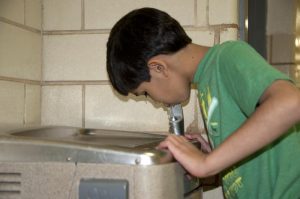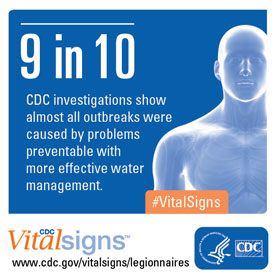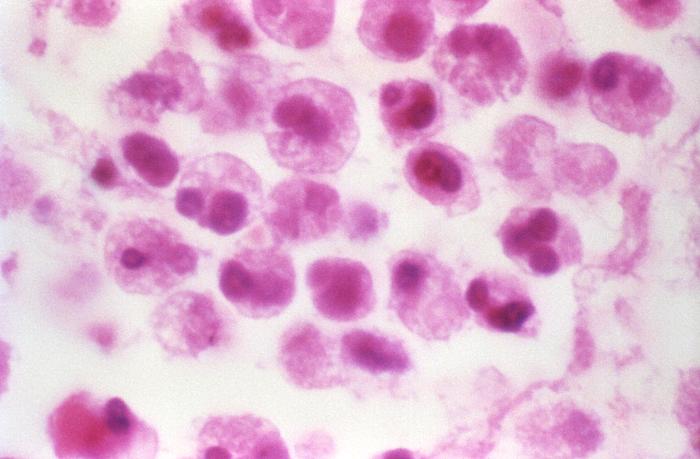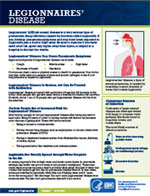Information on Water Management Legislation and Startup
During the 2020 General Assembly Session, the legislature passed Senate Bill 410. The legislation, which amends Code of Virginia § 22.1-138, adds subsection C, and requires school boards to maintain a water management program for the prevention of Legionnaires’ disease at each public school building in the local school division. The effective date of the legislation is July 1, 2021, giving school boards time to develop and implement the required water management programs.
Schools and businesses who closed buildings or significantly reduced activities due to COVID-19 should thoroughly flush their building’s plumbing systems before reopening.
For more information, see the Virginia Department of Education's "Water Management Program to Prevent Legionella Pneumophila Growth in Public School Buildings".
Information for Schools
- FAQs
- Legionella/Legionnaires Disease
- Building a Water Management Program
- Flushing
- Other Resources
- Finding Assistance
Frequently Asked Questions Regarding Water Management Programs
- Develop and maintain a water management program for the prevention of Legionnaires' Disease
- Validate the program at least on an annual basis
- Maintain files on the program documenting program activities, including validation results and remediation activities, and make them available for review
Legionella Bacteria and Legionnaires Disease
Legionella is a type of bacteria that can cause a serious type of pneumonia known as Legionnaires’ disease or in some cases, a less serious illness called Pontiac fever. Legionella is found naturally in most freshwater environments, but can become a health concern when it begins to grow and spread in water systems such as cooling towers, hot tubs, and building plumbing systems.
Legionella spreads after growing in a building water system and then is transmitted to people through water droplets small enough to breathe in. This can even occur through the drinking of contaminated water, which accidentally ends up in the lungs. This makes people with swallowing difficulties at an increased risk of contracting legionella. In general, Legionella does not spread from person to person; however, it has been known to do so under rare circumstances.
ASHRAE (American Society of Heating, Refrigeration, and Air Conditioning Engineers) Guideline 12 states:
Controlling the population of protozoa and other microorganisms may be the best means of minimizing Legionella susceptibility of the host. Over 40 species of Legionella have been identified; L. pneumophila appears to be the most virulent and is associated with approximately 90% of cases of Legionellosis. Most L. pneumophila infections are caused by serogroup 1; however, certain serogroup 1 strains may be more virulent. The risk of acquiring Legionnaires’ disease is greater for older persons and for those who smoke tobacco or have chronic lung disease. Persons whose immune system is suppressed by certain drugs or by underlying medical conditions appear to be at particularly high risk.
For more information on Legionella and Legionnaires’ Disease including symptoms, growth, and prevention, please visit VDH's informational webpage here, the CDC page on Legionella or click the factsheet to the right on Legionnaires’ Disease.
In the video below, the CDC better explain Legionella bacteria and how it cultivates.
Importance of Water Management
 Building owners and operators are responsible for maintaining drinking water quality throughout their buildings. Building drinking water systems are designed to support the continuous delivery of safe water. When buildings or parts of buildings (such as gym locker rooms) go unused, so too does the water sitting in pipes. To make sure drinking water systems remain at safe levels it is important that all of the water in the building be flushed out and replaced with fresh water from the water utility system.
Building owners and operators are responsible for maintaining drinking water quality throughout their buildings. Building drinking water systems are designed to support the continuous delivery of safe water. When buildings or parts of buildings (such as gym locker rooms) go unused, so too does the water sitting in pipes. To make sure drinking water systems remain at safe levels it is important that all of the water in the building be flushed out and replaced with fresh water from the water utility system.
When water is not used, the disinfectant in the water dissipates over time. Without chlorinated water flowing through the pipes for an extended period, microorganisms can grow in water pipes, fixtures and tanks. Prolonged water stagnation also can diminish the normal, protective scale on interior pipe walls. Without the protective scale, metal from the piping may dissolve into the water.
Water management plans will assist building owners to understand, measure, and manage water quality in building plumbing systems. The practice of flushing to maintain building water quality is one tool employed as part of a water management plan.
What is a Water Management Program?
 Water management programs identify hazardous conditions and take steps to minimize the growth and spread of Legionella and other waterborne pathogens in building water systems. Developing and maintaining a water management program is a multi-step process that requires continuous review. Seven key activities are routinely performed in a Legionella water management program:
Water management programs identify hazardous conditions and take steps to minimize the growth and spread of Legionella and other waterborne pathogens in building water systems. Developing and maintaining a water management program is a multi-step process that requires continuous review. Seven key activities are routinely performed in a Legionella water management program:
- Establish a water management program team
- Describe the building water systems using flow diagrams and a written description
- Identify areas where Legionella could grow and spread
- Decide where control measures should be applied and how to monitor them
- Establish ways to intervene when control limits are not met
- Make sure the program is running as designed and is effective
- Document and communicate all the activities
In general, the principles of effective water management include
- Maintaining water temperatures outside the ideal range for Legionella growth
- Preventing water stagnation
- Ensuring adequate disinfection
- Maintaining premise plumbing, equipment, and fixtures to prevent scale, corrosion, and biofilm growth, all of which provide a habitat and nutrients for Legionella
Members of a building water management program team work together to
- Identify ways to minimize growth and spread of Legionella and other waterborne pathogens
- Conduct routine checks of control measures to keep an eye on areas at risk
- Take action if a problem is found
Once established, water management programs require regular monitoring of key areas for potentially hazardous conditions. Programs should include predetermined responses to correct hazardous conditions if the team detects them.
Further information is included in a presentation developed by VDH for Legionella Maintenance and Water Management Programs in schools.
To learn more about developing a water management plan, visit the CDC's in depth toolkit here.
The Association of State and Territorial Health Officials (ASTHO) in partnership with ASDWA released a new factsheet, Using Water Quality Monitoring Data for Your Building Water Management Program. 
This factsheet outlines how to monitor water quality in facilities to prevent the growth of Legionella and other opportunistic pathogens. It discusses important basic water quality monitoring parameters, including temperature, pH, turbidity, and disinfectant residual. The document is meant to help water management program teams understand the water quality at the building point of entry so they can establish the water quality baseline for the building.
Other Useful Information:
The Georgia Department of Public Health produced an example water management template, dated June 2019. Click here or visit https://dph.georgia.gov/
The World Health Organization provides guidance for water safety including in depth guides to creating a water safety plan. Their document here, consists of a diverse list of water safety measures.
Flushing Water Systems and Why it's Important
When water is not used, the disinfectant in the water dissipates over time. Without chlorinated water flowing through the pipes for an extended period, microorganisms can grow in water pipes, fixtures and tanks. Prolonged water stagnation also can diminish the normal, protective scale on interior pipe walls. Without the protective scale, metal from the piping may dissolve into the water.
During the flushing process, stagnant, existing water is replaced with fresh water, which has been continually treated and monitored by the water utility. By running water through the pipes we can flush out the old stagnant water and bring in fresh water to replace it.
This is usually accomplished by running water fixtures such as showers, faucets, and flushing toilets in order to clear out the old water in the pipes and allow fresh water to flow through. The amount of time this is done depends on the size of the building and the configuration of the building plumbing.
Resources and Guides for Flushing Water Systems:
The Washington State Department of Health published Guidance for Legionella and Building Water System Closures, including information on plumbing system flushing (September 2020).
The US EPA recommends that building owners and managers take proactive steps to protect public health by minimizing water stagnation during closures and taking action to address building water quality prior to reopening. More information can be found on EPA’s website.
American Water Works Company, Inc. (American Water) provides a useful background on flushing pipes and includes resourceful topics in regards to flushing a water system. - Has your facility been closed for weeks? Flush the pipes.
Water Management Guidance
Building Startup
- ASDWA (May 2020) - Resources for Building Water System
- EPA (May 2020) -Checklist: Restoring Water Quality in Buildings for Reopening
- EPA (May 2020) - Maintaining or Restoring Water Quality in Buildings with Low or No Use
- IAPMO (May 2020) - Tips and Recommendations for the Safe and Efficient Flushing of Plumbing Systems in Buildings
- US EPA (May 2020) - Restoring Water Quality in Buildings for Reopening
- US EPA (May 2020) - Maintaining or Restoring Water Quality in Buildings With Low or No Use
Water Sampling
- CDC video on Sampling for Legionella
- DCLS webpage to help Find a Lab
- AWWA Resource Community
- Association of Water Technologies - List of Accredited Legionella Testing Laboratories
- Legionella Sample Collection- guidance on sampling protocols
Legionella & Legionnaires' Disease
- VDH's Information Webpage on Legionella
- EPA Technologies for Legionella Control in Premise Plumbing Systems
- CDC video from their series "We were there" on Legionella
- AWWA Resources on Legionella
- AWWA Monitoring distribution systems for Legionella pneumophila
using Legiolert - NSF Legionella Risk Assessment
Industry Standards/Guidance
AWT 2019 Position Statement (FREE)- provides current Legionella and related legionellosis information
in a broad and useful format that can be easily utilized as a reference and guidance document to manage
the risk of Legionnaires’ disease from water systems
NASEM (2020): Management of Legionella in Water Systems (FREE)- provides a report on a study that
reviews the state of science on Legionella contamination of water systems, specifically the ecology and
diagnosis and explores the process of transmission via water systems, quantification, prevention and
control, and policy and training issues that affect the incidence of Legionnaires’ disease
NIOSH (2019): Preventing Occupational Exposure to Legionella (FREE)- NIOSH recommendations to
employers to prevent conditions that lead to Legionella growth and spread in workplaces
ASHRAE (American Society of Heating, Refrigeration, and Air Conditioning Engineers) Standard 188-2018: Legionellosis: Risk Management for Building Water Systems
IAPMO (International Association of Plumbing and Mechanical Officials) (June 2020) jointly issued a standard ASSE/IAPMO/ANSI 12080 for Legionella Water Safety and Management Personnel which outlines the minimum qualifications needed to become a member of a building water safety team.
Water Management Service Providers
VDH does not endorse or recommend any particular water management service provider, or contractor. The following list is based only on those service providers who have shared their contact information with the agency. The omission of a service provider from the listing is not a statement of unsuitability. VDH also does not guarantee the work or license status of any listed provider. It is recommended that you view the Department of Professional and Occupations Regulation (DPOR) website, www.dpor.virginia.gov, to verify that a service provider is properly licensed in accordance with state law.
Service Provider List
Other Certifications
While there is no State Law or requirement for individual certifications, ASSE has recently released a list of certified professionals who have been certified in Legionella. To gain access to this list, click the link here to visit their certification page. Then under "Search by Certification" select "12080- Legionella" from the menu and click search.


